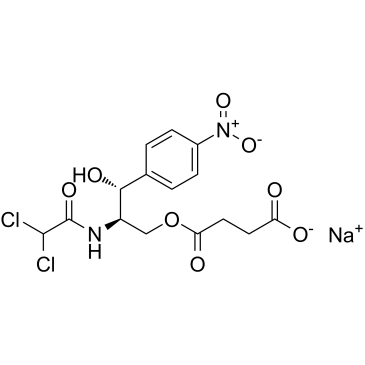Studies on the haemotoxicity of chloramphenicol succinate in the Dunkin Hartley guinea pig.
J A Turton, C M Andrews, A C Havard, T C Williams
Index: Int. J. Exp. Pathol. 83(5) , 225-38, (2002)
Full Text: HTML
Abstract
In man, chloramphenicol (CAP), induces two major haemotoxic effects. First, a reversible, dose-related reticulocytopenia and anaemia developing during treatment. Second, a non-dose-related aplastic anaemia (AA), developing weeks after treatment, is often irreversible and fatal. In previous studies, we developed a mouse model of the reversible reticulocytopenia/anaemia using CAP succinate (CAPS); attempts to induce AA in the mouse with CAPS were unsuccessful; in the rat, CAPS induced only minimal haemotoxicity. We therefore wished to investigate haematological changes caused by CAPS in a third rodent, particularly in relation to the induction of significant 'late stage' bone marrow depression (AA). Female guinea pigs were gavaged with CAPS in three experiments. In a dose ranging study, CAPS (at 2500 and 3500 mg/kg) was administered daily for 9 days, and blood examined at 1 day post dosing. CAPS induced increased erythrocyte values (an apparent haemoconcentration effect), and reduced reticulocytes and femoral marrow nucleated cell counts (FNCC). In a second experiment, CAPS was given at 333, 666 and 1000 mg/kg (13 days); haematological changes were compared with results from the initial study, with evidence of dose-related effects. In a final experiment, CAPS was administered (825 mg/kg, 16 days) and blood studied at 1, 12, 28 and 63 days post dosing. At day 1, erythrocyte values were decreased (NS), and reticulocytes and FNCC were reduced; the marrow was hypocellular with erythroid depletion. At 12 and 28 days, values returned towards the normal range. At 63 days, parameters were normal. Thus, CAPS (825 mg/kg for 16 days) induced changes comparable to the reversible bone marrow depression seen in man; but there was no evidence of 'late stage' (i.e. at 63 days) marrow depression, as would be seen in a developing or overt marrow aplasia (AA). The guinea pig (like the mouse) is a model for the early events, but is not a good model for CAP-induced AA in man.
Related Compounds
| Structure | Name/CAS No. | Molecular Formula | Articles |
|---|---|---|---|
 |
Chloramphenicol sodium succinate
CAS:982-57-0 |
C15H15Cl2N2NaO8 |
|
The myelotoxicity of chloramphenicol: in vitro and in vivo s...
1998-01-01 [Hum. Exp. Toxicol. 17(1) , 8-17, (1998)] |
|
A commercial enzyme immunoassay method (EMIT) compared with ...
1988-09-01 [Clin. Chem. 34(9) , 1872-5, (1988)] |
|
Chloramphenicol succinate, a competitive substrate and inhib...
2004-08-01 [Toxicol. In Vitro 18(4) , 441-7, (2004)] |
|
Fluorometric quantitation of broth-cultured mycoplasmas by u...
1993-05-01 [J. Clin. Microbiol. 31(5) , 1303-7, (1993)] |
|
Metabolism of chloramphenicol succinate in human bone marrow...
2000-08-01 [Eur. J. Clin. Pharmacol. 56(5) , 405-9, (2000)] |